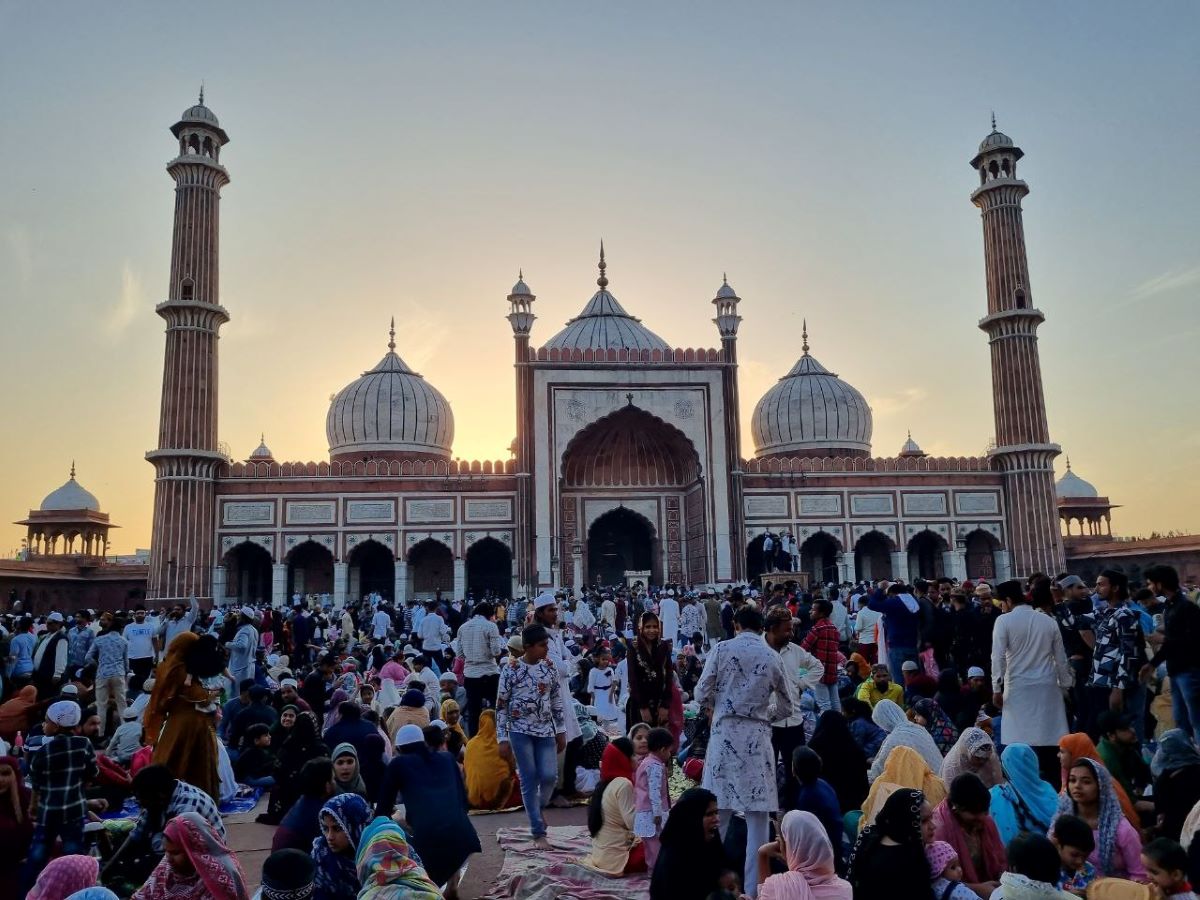
READYING: Visitors prepare for iftar, the sunset meal, at Jama Masjid Photo: Yusra Nazim
The Jama Masjid in Old Delhi transforms into a bustling hub of activity during Ramadan, attracting people from all walks of life to partake in the cherished tradition of Iftar.
The Mughal-era mosque has a different vibe during the Islamic month of fasting as the dastarkhwan (table cloth) is spread lavishly for Iftar (the meal Muslims eat at dusk to break their fast) inside the premises.
People, who often come with family and in groups, sit in rows to savour the delicacies. As the sun sets and the cannon fires off at dusk, signalling the end of the fast, people eagerly indulge in dates before relishing fresh fruits, fritters, samosas, and jalebis, accompanied by Rooh Afza milk sherbet.
It is a magical affair as evening light reflects on the mosque’s domes.
Preparations for the Iftar meal begin well before dusk, with the streets surrounding the mosque adorned with colourful kiosks offering a variety of tantalising treats, including seekh kebabs, Mohabbat Ka Sharbat, dates, pakodas, and other Mughlai specialities.
“A dastarkhwan is a sheet spread on a covered area with invocations for blessing the food and family,” says historian Rana Safvi, as she conducts an experiential walk with 30-odd people. Visitors hailing from countries such as South Africa, Saudi Arabia and distinct parts of India listen intently to her as she describes the various practices, etiquettes and historical context of the month.
“Islam is a practical religion and charity is heavily stressed upon,” she says.
Titus, a financial consultant who hails from Kerala, says that following historical trails is his passion.
He sits down as he has Iftar with the rest of the members participating in the walk.
“It is important to understand and also experience the cultural practices associated with a place. Otherwise, one’s understanding remains somewhat superficial,” he says while eating dates.
Following Iftar, families venture to nearby restaurants in the Jama Masjid area to feast on an assortment of mouthwatering delights, including kababs, haleem, nihari, and biryani.
For residents like Omar Khayyam, the communal spirit of breaking fast together transcends cultural and religious boundaries, embodying a sense of unity and tradition.
As the Maghrib (sunset) prayer marks the end of the fast, Matia Mahal and Chitli Qabar localities bustle with activity as people enjoy sumptuous dishes and shop for clothes, shoes, and other essentials. Until Sehri, the pre-dawn meal, the entire Jama Masjid area remains bustling with activities.
In essence, Ramadan at Jama Masjid is not merely about breaking fast; it is a celebration of community, culture, and spirituality, where strangers become friends and the bond of brotherhood is strengthened through the shared experience of Iftar.
Putin is expected to make diplomatic visits to Rajghat, Bharat Mandapam, Hyderabad House and Rashtrapati…
Toxic air persists with AQI at 323; sharp morning chill adds to city’s discomfort
The government has mandated intensive cleanliness drives and zero tolerance for dust as Delhi steps…
The crisis exposes failing drainage systems and recurring pipeline leaks across the capital
The event is produced and promoted by TCO Group, in partnership with TM Ventures and…
Residents say drilling for the new metro line has damaged homes and left families without…